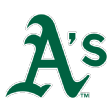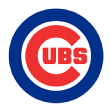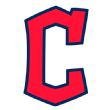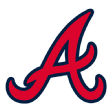Baseball’s marathon regular-season schedule tells us a lot about who’s the best team in baseball, but as of today, that question becomes almost totally irrelevant.
A 108-win team (like the Red Sox) is barely a 3:2 favorite in a single game against a 90-win team (like the Braves), and that’s the biggest gap in this year’s postseason. Most of these games are, to the naked eye, not much more weighted than a coin flip — at least, until the game starts and one team simply plays better.
But if it’s irrelevant to know who the best teams are, it’s helpful to know what the best teams are best at — and here the long schedule becomes quite helpful. Each playoff team emerges from the regular season with something it’s best at — or the most extreme at. As you watch the next four rounds of baseball, here’s what to notice about each team’s strengths and styles.
Each bullet point listed below is something the team in question leads all playoff teams in. Unless otherwise noted, no adjustments for ballpark or league are made, though some advance stats do include adjustments for these things. These refer to regular-season performances by regular-season rosters, so they don’t tell the complete story; each team has had some roster turnover or injuries, and each team will use some of its players more or less extensively (or not at all) during October. Finally, note that some of these measures are descriptive or value-neutral, and they might not necessarily equate to effectiveness. We use the catchall word “best,” but feel free to sub in the word “most” or “highest” where appropriate.
Best in:
• Scoring (runs per game)
• Overall offense (by OPS+)
• Average exit velocity (hitters)
• On-base percentage
• Doubles
• Reaching base on errors
• Stolen base success rates
• “Clutch” performance — offense in high leverage vs. lower leverage
• Offense (OPS) with men on base
• OPS against right-handed pitching
• OBP at top of the lineup
• Wins above replacement and defensive runs saved, right field
• WAR, designated hitter
• Best single starter (by deserved run average, cFIP) — Chris Sale
 Thirty-five percent of Red Sox baserunners end up coming around to score — the highest rate in baseball — and it’s easy to see why. No player in these playoffs hit better with men on base this year than J.D. Martinez — and right behind him are Mookie Betts (second among playoff hitters), Andrew Benintendi (seventh) and Xander Bogaerts (eighth). Those opportunities also come frequently, since the Red Sox have a .418 on-base percentage out of the leadoff spot, a whopping 52 points higher than any other team.
Thirty-five percent of Red Sox baserunners end up coming around to score — the highest rate in baseball — and it’s easy to see why. No player in these playoffs hit better with men on base this year than J.D. Martinez — and right behind him are Mookie Betts (second among playoff hitters), Andrew Benintendi (seventh) and Xander Bogaerts (eighth). Those opportunities also come frequently, since the Red Sox have a .418 on-base percentage out of the leadoff spot, a whopping 52 points higher than any other team.
We can’t say with certainty that the Red Sox have the best offense in this postseason, since their home ballpark boosts their output. They’re the league’s highest-scoring team, but they are just fourth on the road. They do hit the ball harder than anybody else, however, and they probably have the best cluster of table setters and table clearers at the top half of their lineup, like a row of hotels on St. James, Tennessee and New York.
Best in:
• OPS vs. lefties
• Batters’ wOBA against breaking pitches
• Pull percentage, hitters
• Scoring runner from third with less than two outs
• WAR, second base
• Infield shifts (most)
• Runs allowed
• Starting pitching, by deserved run average
• Relief pitching, by deserved run average & win probability added
• OPS allowed vs. right-handed batters & left-handed batters
• Home runs allowed
• Road exit velocity allowed
• Intentional walks issued (fewest)
• Pitchers’ contact percentage (lowest)
• Pitchers’ contact percentage on pitches in the zone
 The Red Sox won more games, but according to Baseball Prospectus’ third-order standings — which measure a team by its underlying hitting and pitching performances — it was the Astros who played like a 108-win team. Last year’s World Series champs had good pitching matched with historically great offense, but this year’s roster flipped that. The Astros’ pitchers are the best no matter how you split up the data, home or road, against lefties or righties, as starters or in relief. In a high-strikeout era, the Astros stand alone, with a record 10.4 K’s/9.
The Red Sox won more games, but according to Baseball Prospectus’ third-order standings — which measure a team by its underlying hitting and pitching performances — it was the Astros who played like a 108-win team. Last year’s World Series champs had good pitching matched with historically great offense, but this year’s roster flipped that. The Astros’ pitchers are the best no matter how you split up the data, home or road, against lefties or righties, as starters or in relief. In a high-strikeout era, the Astros stand alone, with a record 10.4 K’s/9.
Crucially — especially against the more patient offenses they’ll see in the postseason — the Astros’ pitchers can get strikeouts without relying on batters to chase outside the strike zone. Houston pitchers get more swinging strikes in the zone than any team, which allowed them not only to set the all-time record for strikeouts this year but to also have the league’s fourth-lowest walk rate.
Best in:
• Home runs
• Isolated power
• Isolated power, opposite field
• Strike percentage as hitters (lowest)
• Bases taken as baserunners (advancing on fly balls, wild pitches, passed balls, balks, defensive indifference)
• Blocking runs, catcher (Austin Romine)
• Defensive runs saved, left field
• Preventing bunt hits
• Pitcher fastball velocity
• Reliever fastball velocity
 The Yankees, who set the all-time record for home runs this year, hit almost twice as many opposite-field homers as any other team. A lot of that can be credited to their ballpark, which the Yankees’ right-handed sluggers are extremely good at taking advantage of:
The Yankees, who set the all-time record for home runs this year, hit almost twice as many opposite-field homers as any other team. A lot of that can be credited to their ballpark, which the Yankees’ right-handed sluggers are extremely good at taking advantage of:
-
The Yankees hit 56 opposite-field home runs; 55 of them were by right-handers.
-
Of the 56, 37 came at home. No other team in baseball hit 37 opposite-field homers at all.
-
Ten different Yankees righties hit an opposite-field homer at Yankee Stadium this year, and six hit at least three.
-
Their right-handed batters had the highest isolated power on opposite-field contact of any team since at least 2000.
Of course, the Yankees are still a powerful team on the road, but they don’t stand out quite so much. Their slugging percentage when they go the other way drops from .581 to .464, and the A’s hit more opposite-field homers on the road than the Yanks did.
 Oakland Athletics (97-65)
Oakland Athletics (97-65)
Best in:
• Road scoring
• Road OPS, road wOBA
• Second-half OPS
• OPS by 7-8-9 hitters
• OPS vs. power pitchers
• Highest launch angle, batters
• Advancing runners on second base with none out
• Fewest outs made on the bases
• WAR & defensive runs saved, third base
• Defensive runs saved, first base
• Team defensive efficiency (rate of all batted balls converted into outs)
• Defensive efficiency on ground balls
• Outs made on “remote” plays — those classified by Inside Edge as 1 percent to 10 percent likely
• Record in one-run games
There’s a case that the A’s have the best defense in baseball, and particularly the best infield defense. There’s also a case that the A’s have had the best offense in baseball, but that case is obscured by their offense-strangling home ballpark. But no team has hit better on the road, by any number of measures: The A’s lead all playoff teams in road hits, road homers, road slugging and road scoring; they’re second in road on-base percentage.
Best in:
• WAR, left field
• WAR & defensive runs saved, center field
• Defensive runs saved, team
• Caught-stealing percentage on defense
• Defensive efficiency, line drives
• Defensive efficiency, fly balls
• Steals of third base
• Pitchers’ batting, by OPS
• Relief outings of more than three outs
• Average exit velocity allowed (tied with Dodgers)
• Best single relief pitcher (by DRA, cFIP) — Josh Hader
 The Brewers had the National League’s most valuable outfield by a mile, and it was due as much to their outfield defense as to Christian Yelich‘s Triple Crown pursuit and Lorenzo Cain‘s .395 OBP in the leadoff spot. Milwaukee’s outfield defense was 51 runs better than average, by defensive runs saved. Only the Angels turned more fly balls into outs than the Brewers, and no team turned more line drives into outs.
The Brewers had the National League’s most valuable outfield by a mile, and it was due as much to their outfield defense as to Christian Yelich‘s Triple Crown pursuit and Lorenzo Cain‘s .395 OBP in the leadoff spot. Milwaukee’s outfield defense was 51 runs better than average, by defensive runs saved. Only the Angels turned more fly balls into outs than the Brewers, and no team turned more line drives into outs.
It’s worth noting that the ability to turn line drives into outs is something a lot of these playoff contenders have in common: The A’s were second in baseball, the Braves were third, the Red Sox fourth and the Cubs and Astros sixth and seventh.
Best in:
• Batters’ batting average on balls in play
• Infield hits
• Productive outs (advancing a runner with the first out of an inning or scoring a runner with the second out)
• Batter wOBA against pitches 95-plus mph
• Pitcher pickoffs
• Catcher pickoffs
• Extra-base hits allowed (fewest)
• “Clutch” pitching performance in high leverage vs. lower leverage
 The Cubs do a little bit of everything to stop runners from stealing, beyond simply relying on Willson Contreras‘ strong arm. Jose Quintana‘s five pickoffs and Kyle Hendricks‘ four put them among the league’s top 10. (Even Jon Lester has one.) And Contreras is extremely aggressive in trying to pick off runners, consistent with the Cubs’ “hunt-for-outs” defensive approach. Contreras has picked off eight runners this year, the most in baseball and more than any other three National League catchers combined. (He also leads all major league catchers with 10 throwing errors, double the reason to stay alert when he’s behind the plate.)
The Cubs do a little bit of everything to stop runners from stealing, beyond simply relying on Willson Contreras‘ strong arm. Jose Quintana‘s five pickoffs and Kyle Hendricks‘ four put them among the league’s top 10. (Even Jon Lester has one.) And Contreras is extremely aggressive in trying to pick off runners, consistent with the Cubs’ “hunt-for-outs” defensive approach. Contreras has picked off eight runners this year, the most in baseball and more than any other three National League catchers combined. (He also leads all major league catchers with 10 throwing errors, double the reason to stay alert when he’s behind the plate.)
Best in:
• Offense (wRC+, true average)
• Chase rate on pitches outside the zone (lowest)
• Walk rate
• Pitches per plate appearance
• Swing-rate on 3-0 (highest)
• OPS, first pitch
• Fielding runs above average, catcher (Yasmani Grandal)
• WAR, catcher
• WAR, pinch-hitters
• Extra bases taken, defense (fewest allowed)
• Strike rate, pitchers
• First-pitch strike rate
• Preventing runners on third with less than two outs from scoring
• Second-half pitching (by OPS allowed)
• Average exit velocity allowed (tied with Brewers)
 The Dodgers are playing platoons at five positions these days, the result being they have more talent on their bench most days than some teams have in their starting lineups. Max Muncy has pinch hit 30 times and hit .292/.433/.667; Chris Taylor has pinch hit 17 times for .313/.353/.625; and Joc Pederson, 33 times, .269/.394/.500. Even Chase Utley is hitting .342 in 43 pinch-hitting appearances. The Dodgers’ pinch-hitters overall have an OPS of nearly 100 points higher than the league average, giving them a potentially game-changing counterattack to the postseason bullpen parades.
The Dodgers are playing platoons at five positions these days, the result being they have more talent on their bench most days than some teams have in their starting lineups. Max Muncy has pinch hit 30 times and hit .292/.433/.667; Chris Taylor has pinch hit 17 times for .313/.353/.625; and Joc Pederson, 33 times, .269/.394/.500. Even Chase Utley is hitting .342 in 43 pinch-hitting appearances. The Dodgers’ pinch-hitters overall have an OPS of nearly 100 points higher than the league average, giving them a potentially game-changing counterattack to the postseason bullpen parades.
Best in:
• Stolen bases
• Baserunning runs
• Hit by pitches
• Contact rate, batters
• Strikeout rates, batters (lowest)
• Double play rates, batters (lowest)
• Plate appearances with platoon advantage, batters
• wOBA against fastballs
• WAR & defensive runs saved, shortstop
• Walks allowed (lowest)
• Three-pitch strikeouts
• Length of starting pitchers’ outings
• Pitchers’ OPS allowed third time through the order
• Plate appearances with platoon advantage, pitchers
 You might look at that list above and surmise, if you’re feeling generous, that Cleveland also has the best manager and coaching staff. The Indians steal a ton of bases and rarely get caught (and were picked off fewer times than any playoff team); they put the ball in play while also avoiding double plays; their starters are pitch-efficient and work deep into games; and their relievers get the platoon advantage and … well, get smacked around. The biggest difference between this year’s Indians and last year’s is the collapse of the bullpen, but otherwise Cleveland does everything well.
You might look at that list above and surmise, if you’re feeling generous, that Cleveland also has the best manager and coaching staff. The Indians steal a ton of bases and rarely get caught (and were picked off fewer times than any playoff team); they put the ball in play while also avoiding double plays; their starters are pitch-efficient and work deep into games; and their relievers get the platoon advantage and … well, get smacked around. The biggest difference between this year’s Indians and last year’s is the collapse of the bullpen, but otherwise Cleveland does everything well.
Best in:
• Bunt hits
• Pop-up rates (lowest)
• Opposite-field rates (highest)
• Percentage of extra bases taken (first to third on singles, first to home on doubles, etc.)
• Triples
• Defensive runs saved, second base
• Double plays turned percentage
• Ground ball percentage, pitchers
• Cutter rates
 German Marquez, Kyle Freeland and Jon Gray were all among the top 20 ground ball starters in baseball this year, and not by accident. The Rockies have had a grounder-oriented pitching staff for a few years now, but one of the challenges of pitching in Coors Field is that even ground balls turn into hits more often than they do in other parks. This year, though, the Rockies had one of the league’s best ground ball defenses, with a BABIP on grounders of more than 20 points lower than from 2014 to 2017.
German Marquez, Kyle Freeland and Jon Gray were all among the top 20 ground ball starters in baseball this year, and not by accident. The Rockies have had a grounder-oriented pitching staff for a few years now, but one of the challenges of pitching in Coors Field is that even ground balls turn into hits more often than they do in other parks. This year, though, the Rockies had one of the league’s best ground ball defenses, with a BABIP on grounders of more than 20 points lower than from 2014 to 2017.
Best in:
• First-pitch swing rate
• Swing rate in the strike zone
• Contact rate on pitches 95+ mph
• OPS with batter ahead in count
• WAR, first base
• Catcher framing (Tyler Flowers)
• Routine outs converted (classified as 90 percent to 100 percent by Inside Edge)
• Infield hits allowed (fewest)
• Pitchers’ sacrifice bunts
 There are teams that control the strike zone by being patient on balls. And there are teams like the Braves that control it by being aggressive on strikes. The Braves attack anything in the zone, particularly early in counts, and particularly Freddie Freeman and Ozzie Albies. Freeman swung at nearly half of the first pitches he saw this year, the second highest rate in all of baseball this year. Albies was third. (The Cubs’ Javier Baez was first.) Both of them slugged well over .600 on that pitch.
There are teams that control the strike zone by being patient on balls. And there are teams like the Braves that control it by being aggressive on strikes. The Braves attack anything in the zone, particularly early in counts, and particularly Freddie Freeman and Ozzie Albies. Freeman swung at nearly half of the first pitches he saw this year, the second highest rate in all of baseball this year. Albies was third. (The Cubs’ Javier Baez was first.) Both of them slugged well over .600 on that pitch.
All WARs are Baseball-Reference’s model.
